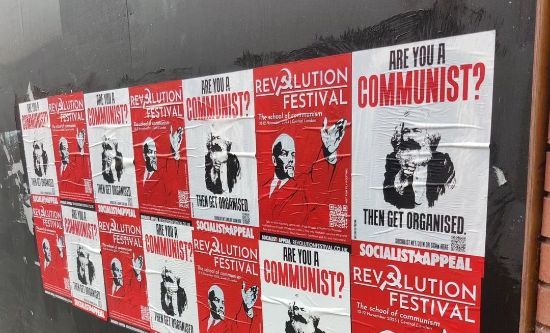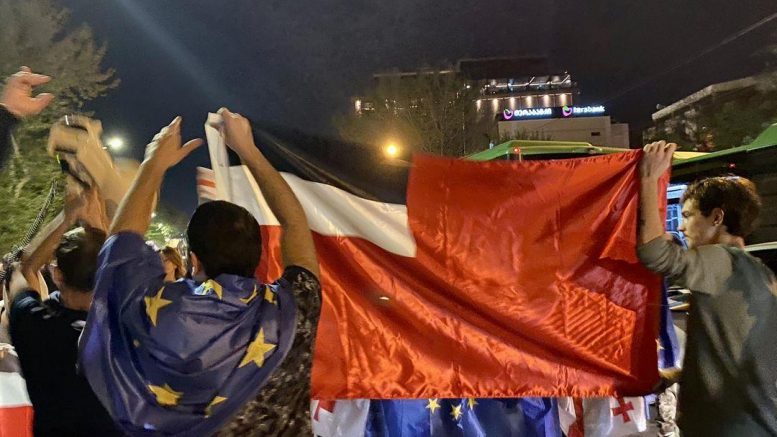Rough sleepers have returned to Finsbury Park and their various belongings lay pressed against the walls of a railway bridge. Just above where they sleep, the walls are plastered with posters asking “Are you a communist?”
The posters are the work of the newly-formed Revolutionary Communist Party, a group formerly known as Socialist Appeal, and which comes out of a Trotskyist tradition. But the iconography of the posters tells a different story: with a large hammer and sickle logo, as well as crude slogans denouncing “the media”. These seem to come more from the Stalinist wing of the international communist movement. In fact, in both design and message, they refer to a specific period beginning in 1928 when the Communist International made a sharp, sectarian turn to the left. It was known as the “Third Period”.
It is an odd choice for a non-Stalinist political group to make, and my guess is that they are doing so because they think that there is a market for this message among very young people, who have no personal memory of the Cold War or of Stalinism.

There is a strange symmetry between this and what is happening today in the streets of Tbilisi, Georgia.
There, the pro-Russian ruling party, Georgian Dream, has again introduced legislation to “expose” civil society organisations who are to be branded as “foreign agents” if they received money from non-Georgian sources. The legislation is very unpopular, and was withdrawn last year due to mass protests. This year I noticed one thing I hadn’t seen before. Some of the protesters are carrying banners with the flag of the first Georgian republic (1918 – 1921).
When Georgia declared its independence from the Soviet Union in 1991, it adopted that flag, but after years of political turmoil and civil war, a new flag took its place. The blood-red revolutionary banner of the Georgian Social Democrats was dispensed with. The new flag focusses on the country’s Christian faith instead.
But now the old flag appears to be back. Some protesters were even carrying newly-minted versions of the same flag. Some students were swearing to fight for Georgia’s independence in front of it.
I asked some friends in Georgia what was going on. As one person put it, “the ‘old flag’ has seen a revival among youth recently as a symbol of the Republic.”
Another correspondent told me, “when I used to use the National Library reading room for work, it was absolutely full of young students poring over periodicals and newspapers from the First Republic. As they’re too young to have any negative associations with the flag (from the 1990s), it’s definitely something cool and exciting to them as a symbol of sovereignty and independence against seemingly impossible odds.”
As one person summed it up, “there are good historians that brought the discussions of the first republic back to the table, and they are so relevant and thrilling that people got hooked.”
Words and symbols have meanings — and those meanings are defined by their actual use.
In the last century, the word “Communist” and the hammer and sickle logo came to be associated with a brutal totalitarian regime not only in the Soviet Union, but in China, North Korea, Cuba and elsewhere. If the leaders of Britain’s Revolutionary Communist Party are betting on a new generation knowing nothing at all about this, then what they are doing is the worst kind of cynical manipulation.
The situation in Tbilisi is the exact opposite. A generation of young people is growing up learning for the first time the real history of their country, especially during the first years of the twentieth century. They are fascinated by what they have learned, and have revived a symbol of that time — a symbol of an independent Georgia, one dominated by Social Democrats — and they are using that symbol to fight for a different future. I hope that they win.
This article appears in this week’s issue of Solidarity.
